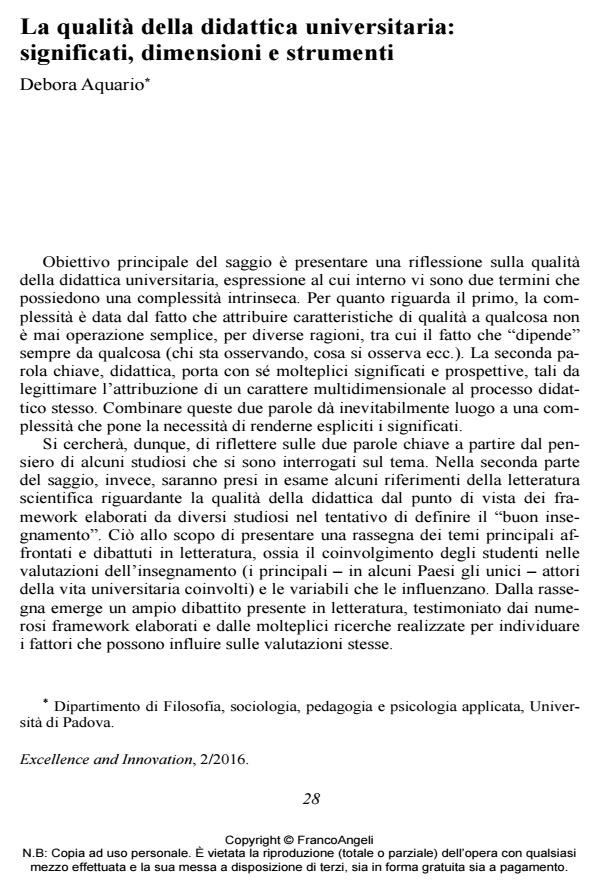La qualità della didattica universitaria: significati, dimensioni e strumenti
Titolo Rivista EXCELLENCE AND INNOVATION IN LEARNING AND TEACHING
Autori/Curatori Debora Aquario
Anno di pubblicazione 2016 Fascicolo 2016/2
Lingua Italiano Numero pagine 15 P. 28-42 Dimensione file 164 KB
DOI 10.3280/EXI2016-002003
Il DOI è il codice a barre della proprietà intellettuale: per saperne di più
clicca qui
Qui sotto puoi vedere in anteprima la prima pagina di questo articolo.
Se questo articolo ti interessa, lo puoi acquistare (e scaricare in formato pdf) seguendo le facili indicazioni per acquistare il download credit. Acquista Download Credits per scaricare questo Articolo in formato PDF

FrancoAngeli è membro della Publishers International Linking Association, Inc (PILA)associazione indipendente e non profit per facilitare (attraverso i servizi tecnologici implementati da CrossRef.org) l’accesso degli studiosi ai contenuti digitali nelle pubblicazioni professionali e scientifiche
The aim of the paper is to present a reflection about the evaluation of quality of teaching in higher education starting from the expression "quality of teaching": it contains two complex words that need to be considered in their meanings. In international studies about quality of teaching in higher education, many frameworks have been developed by different researchers with the aim of exploring the multidimensionality of the good teaching, as well as many instruments have been developed to be filled in by students for the evaluation of teaching quality.
Parole chiave:Teaching in higher education; quality; students’ ratings of instruction; good teaching.
Debora Aquario, La qualità della didattica universitaria: significati, dimensioni e strumenti in "EXCELLENCE AND INNOVATION IN LEARNING AND TEACHING" 2/2016, pp 28-42, DOI: 10.3280/EXI2016-002003